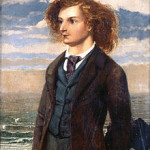 On this day in 1909, English poet, playwright, novelist, and critic Algernon Charles Swinburne died at The Pines, 11 Putney Hill, Putney, London at the age of 72. Born at 7 Chester Street, Grosvenor Place, London, on 5 April 1837. He devised the poetic form called the roundel, a variation of the French Rondeau form. In addition, he wrote several novels, and contributed to the famous Eleventh Edition of the Encyclopædia Britannica. He was nominated for the Nobel Prize in Literature in every year from 1903 to 1907 and again in 1909. Author H. P. Lovecraft considered that Swinburne was “the only real poet in either England or America after the death of Mr. Edgar Allan Poe.”
On this day in 1909, English poet, playwright, novelist, and critic Algernon Charles Swinburne died at The Pines, 11 Putney Hill, Putney, London at the age of 72. Born at 7 Chester Street, Grosvenor Place, London, on 5 April 1837. He devised the poetic form called the roundel, a variation of the French Rondeau form. In addition, he wrote several novels, and contributed to the famous Eleventh Edition of the Encyclopædia Britannica. He was nominated for the Nobel Prize in Literature in every year from 1903 to 1907 and again in 1909. Author H. P. Lovecraft considered that Swinburne was “the only real poet in either England or America after the death of Mr. Edgar Allan Poe.”
The Final Footprint – Swinburne was buried at St. Boniface Church, Bonchurch on the Isle of Wight.
#RIP #OTD in 1931 writer, poet (The Prophet), visual artist, philosopher, Kahlil Gibran died at St. Vincent’s Hospital, Manhattan from cirrhosis of the liver, aged 48. The Gibran Museum in Bsharri, Lebanon
#RIP #OTD in 1954, along with brother Louis, manufacturer of photography equipment & the Cinématographe motion picture system, filmmaker, Auguste Lumière died in Lyon, France, aged 91. Family tomb, New Guillotière Cemetery, Lyon
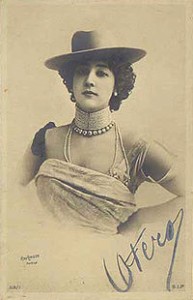 On this day in 1965, dancer, actress and courtesan Carolina “La Belle” Otero died in her apartment at the Hotel Novelty in Nice, France. Born Agustina Otero Iglesias on 4 November 1868 in Valga, Pontevedra, Galicia (Spain). She reportedly married an Italian nobleman, Count Guglielmo 1882, but found a sponsor in 1888 who moved with her to Marseille in order to promote her dancing career in France. She soon left him and created the character of La Belle Otero and became the star of Les Folies Bèrgere productions in Paris. Soon she was one of the most sought after women in Europe, serving as a courtesan to wealthy and powerful men. Apparently her lovers included; Prince Albert I of Monaco, King Edward VII of the United Kingdom, Kings of Serbia, and Kings of Spain as well as Russian Grand Dukes Peter and Nicholas, the Duke of Westminster and writer Gabriele D’Annunzio. Allegedly, duels were fought over her and some of her lovers committed suicide after the affairs ended. It was once said that her extraordinarily dark black eyes were so captivating that they were “of such intensity that it was impossible not to be detained before them.” Otero said, “Women have one mission in life: to be beautiful. When one gets old, one must learn how to break mirrors.”
On this day in 1965, dancer, actress and courtesan Carolina “La Belle” Otero died in her apartment at the Hotel Novelty in Nice, France. Born Agustina Otero Iglesias on 4 November 1868 in Valga, Pontevedra, Galicia (Spain). She reportedly married an Italian nobleman, Count Guglielmo 1882, but found a sponsor in 1888 who moved with her to Marseille in order to promote her dancing career in France. She soon left him and created the character of La Belle Otero and became the star of Les Folies Bèrgere productions in Paris. Soon she was one of the most sought after women in Europe, serving as a courtesan to wealthy and powerful men. Apparently her lovers included; Prince Albert I of Monaco, King Edward VII of the United Kingdom, Kings of Serbia, and Kings of Spain as well as Russian Grand Dukes Peter and Nicholas, the Duke of Westminster and writer Gabriele D’Annunzio. Allegedly, duels were fought over her and some of her lovers committed suicide after the affairs ended. It was once said that her extraordinarily dark black eyes were so captivating that they were “of such intensity that it was impossible not to be detained before them.” Otero said, “Women have one mission in life: to be beautiful. When one gets old, one must learn how to break mirrors.”
The Final Footprint – Otero is interred in Cimetiére du Château in Nice. Gaston Leroux is interred there as well.
#RIP #OTD in 1966 writer (Decline and Fall, A Handful of Dust, Brideshead Revisited, Sword of Honour) Evelyn Waugh died of heart failure at his home in Combe Florey, Somerset, England, aged 62. The Anglican churchyard of the Church of St Peter & St Paul, Combe Florey.
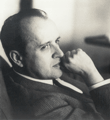 On this day in 1979, Italian composer, pianist, conductor and academic Nino Rota died from a coronary thrombosis at the age of 67 in Rome. Born Giovanni Rota Rinaldi on 3 December 1911 in Milan, Italy. Perhaps best known for his film scores, notably for the films of Federico Fellini, Luchino Visconti and Franco Zeffirelli. He will forever be remembered for his film scores for the first two films of Francis Ford Coppola‘s Godfather trilogy, receiving the Academy Award for Best Original Score for The Godfather Part II (1974).
On this day in 1979, Italian composer, pianist, conductor and academic Nino Rota died from a coronary thrombosis at the age of 67 in Rome. Born Giovanni Rota Rinaldi on 3 December 1911 in Milan, Italy. Perhaps best known for his film scores, notably for the films of Federico Fellini, Luchino Visconti and Franco Zeffirelli. He will forever be remembered for his film scores for the first two films of Francis Ford Coppola‘s Godfather trilogy, receiving the Academy Award for Best Original Score for The Godfather Part II (1974).
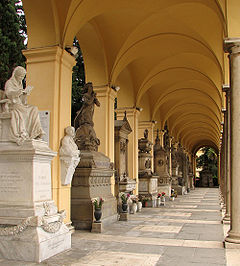 The Final Footprint – Rota shares a simple gravesite with his mother Ernesta, his brother Luigi, and his cousins Maria and Titina. The gravesite is at Cimitero Verano in Rome. The entrance near the gravesite is Portonaccio. There is a marble grave marker which lists the names of those interred. Special thanks to Nina Rota, Mr. Rota’s daughter, for her assistance. For more on Nino Rota visit his website – http://www.ninorota.com/.
The Final Footprint – Rota shares a simple gravesite with his mother Ernesta, his brother Luigi, and his cousins Maria and Titina. The gravesite is at Cimitero Verano in Rome. The entrance near the gravesite is Portonaccio. There is a marble grave marker which lists the names of those interred. Special thanks to Nina Rota, Mr. Rota’s daughter, for her assistance. For more on Nino Rota visit his website – http://www.ninorota.com/.
| Sam Kinison | |
|---|---|
 with Rodney Dangerfield |
|
On this day in 1992, comedian and actor Sam Kinison died at the age of 38 after his white 1989 Pontiac Trans Am was struck head-on on U.S. Route 95, 4 miles (6.4 km) north of Interstate 40 and around 15 miles (24 km) northwest of Needles, California, by a pickup truck driven by someone who had been drinking alcohol. The pickup truck crossed the center line of the roadway and went into Kinison’s lane.
Born Samuel Burl Kinison on December 8, 1953 in Yakima, Washington. He was known for his intense, harsh and politically incorrect humor. A former Pentecostal preacher, he performed stand-up routines that were most often characterized by an intense style, similar to charismatic preachers, and punctuated by his trademark scream.
Kinison was married to Patricia Adkins (1975–1980) and Terry Marze (1981–1989). He began a relationship with dancer Malika Souiri toward the end of his marriage with Marze. On April 4, 1992, six days before his death, Kinison married Souiri at the Candlelight Chapel in Las Vegas. They honeymooned in Hawaii for five days before returning home to Los Angeles on April 10 to prepare for a show that night at the Riverside Resort Hotel and Casino in Laughlin, Nevada.
Kinison was found lying between the seats of his car at the scene of the collision. His brother and the others told him to lie down and he did with his best friend, Carl LaBove, who had been in the following van, holding his head in his hands. Initially, Kinison appeared to have suffered no serious injuries, but within minutes he suddenly said to no one in particular, “I don’t want to die. I don’t want to die.” LaBove later said, “it was as if he was having a conversation, talking to someone else, some unseen person.” Then there was a pause as if Kinison was listening to the other person speak. Then he asked “But why?” and after another pause LaBove heard him clearly say: “Okay, okay, okay.’ LaBove said, “The last ‘okay’ was so soft and at peace … Whatever voice was talking to him gave him the right answer and he just relaxed with it. He said it so sweet, like he was talking to someone he loved.” Kinison then lost consciousness. Efforts to resuscitate him failed. Kinison died at the scene from internal injuries. An autopsy found that he had suffered numerous traumatic injuries, including a dislocated neck, a torn aorta, and torn blood vessels in his abdominal cavity, which caused his death within minutes of the collision. Malika Souiri was rendered unconscious by the collision, but survived the accident with a mild concussion.
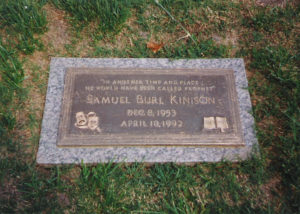
The Final Footprint
Kinison is interred with family members at the Memorial Park Cemetery in Tulsa, Oklahoma. His grave marker includes the unattributed quote: “In another time and place he would have been called prophet.”
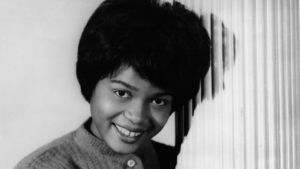 On this day in 2003, singer (“The Loco-Motion”) Little Eva died from cervical cancer in Kinston, North Carolina, at the age of 59. Born Eva Narcissus Boyd on June 29, 1943 in Belhaven, North Carolina. At the age of fifteen she moved to the Brighton Beach section of Brooklyn, New York. As a teenager, she worked as a maid and earned extra money as a babysitter for songwriters Carole King and Gerry Goffin. Boyd’s other single recordings were “Keep Your Hands Off My Baby,” “Let’s Turkey Trot,” and a remake of the Bing Crosby standard “Swinging on a Star,” recorded with Big Dee Irwin (though Boyd was not credited on the label). Boyd also recorded the song “Makin’ With the Magilla” for an episode of the 1964 Hanna-Barbera cartoon series The Magilla Gorilla Show.
On this day in 2003, singer (“The Loco-Motion”) Little Eva died from cervical cancer in Kinston, North Carolina, at the age of 59. Born Eva Narcissus Boyd on June 29, 1943 in Belhaven, North Carolina. At the age of fifteen she moved to the Brighton Beach section of Brooklyn, New York. As a teenager, she worked as a maid and earned extra money as a babysitter for songwriters Carole King and Gerry Goffin. Boyd’s other single recordings were “Keep Your Hands Off My Baby,” “Let’s Turkey Trot,” and a remake of the Bing Crosby standard “Swinging on a Star,” recorded with Big Dee Irwin (though Boyd was not credited on the label). Boyd also recorded the song “Makin’ With the Magilla” for an episode of the 1964 Hanna-Barbera cartoon series The Magilla Gorilla Show.
In 1963, American Bandstand signed her with Dick Clark’s Caravan of Stars national U.S. tour and she was set to perform for the tour’s 15th show scheduled for the night of November 22, 1963 at the Memorial Auditorium in Dallas, Texas when suddenly the Friday evening event was cancelled moments after U.S. President John F. Kennedy was assassinated while touring Dallas in an open car caravan.
She continued to tour and record throughout the sixties, but her commercial potential plummeted after 1964. She retired from the music industry in 1971. She never owned the rights to her recordings. Although the prevailing rumor in the 1970s was that she had received only $50 for “The Loco-Motion,” it seems $50 was actually her weekly salary at the time she made her records (an increase of $15 from what Goffin and King had been paying her as nanny). Penniless, she returned with her three young children to North Carolina, where they lived in obscurity.
Interviewed in 1988 after the success of the Kylie Minogue recording of “The Loco-Motion”, Boyd stated that she did not like the new version; however, its then-current popularity allowed her to make a comeback in show business.
She returned to live performing with other artists of her era on the cabaret and oldies circuits. She also occasionally recorded new songs.
The only existing footage of Little Eva performing “Loco-Motion” is a small clip from the ABC 1960s live show Shindig! wherein she sang a short version of the clip along with the famous dance steps. She also sang “Let’s Turkey Trot” and the Exciters’ song “I Want You to Be My Boy” in the same episode. This TV show was one of her final performances until 1988, when she began performing in concerts with Bobby Vee and other singers. In a 1991 Richard Nader concert, she performed “Loco-Motion” and “Keep Your Hands Off My Baby”. The concert was partially documented on videotape.
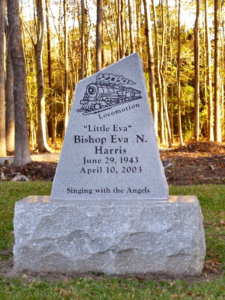 The Final Footprint
The Final Footprint
She is interred in Black Bottom Cemetery in Belhaven. Her gravesite was sparsely marked until July 2008, when a report by WRAL-TV of Raleigh, North Carolina highlighted deteriorating conditions at the cemetery and efforts by the city of Belhaven to have it restored. A simple white cross had marked the site until a new gravestone was unveiled in November of that year. Her new grey gravestone has the image of a steam locomotive prominently engraved on the front and the epitaph reads: “Singing with the Angels”.
Have you planned yours yet?
Follow TFF on twitter @RIPTFF

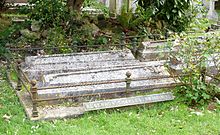
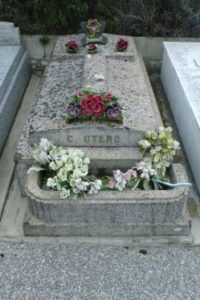
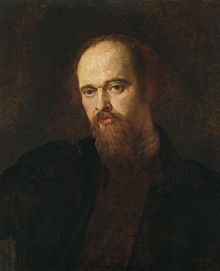
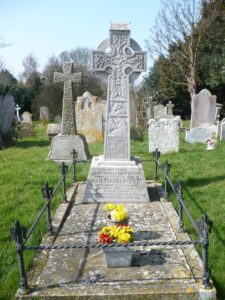






















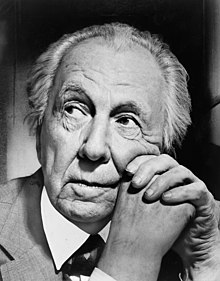
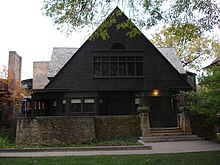
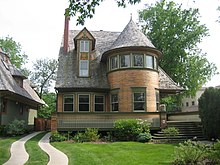









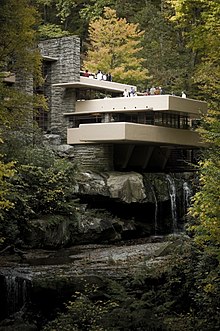



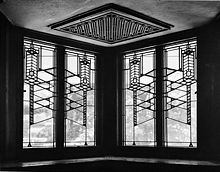







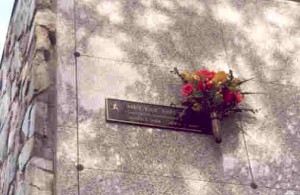
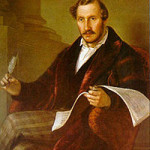 On this day in 1848, composer Gaetano Donizetti died in the house of a noble family, the Scotti, in Bergamo, Lombardy, Italy at the age of 49. Born Domenico Gaetano Maria Donizetti in Bergamo’s Borgo Canale quarter located just outside the city walls on 29 November 1797. Altogether Donizetti wrote about 70 operas. An offer in 1822 from Domenico Barbaja, the impresario of the Teatro San Carlo in Naples, which followed the composer’s ninth opera, led to his move to that city and the composition of 28 operas which were given their premieres at that house or in one of the city’s smaller houses including the Teatro Nuovo or the Teatro del Fondo. This continued until the production of Caterina Cornaro in January 1844. In all, Naples presented 51 of Donizetti’s operas. During this period, success came primarily with the comic operas, the serious ones failing to attract significant audiences. However, the situation changed with the appearance in 1830 of the serious opera, Anna Bolena which was the first to make a major impact on the Italian and international opera scene. After 1830, his best-known works included comedies such as L’elisir d’amore (1832) and Don Pasquale (1843) and historical dramas such as Lucia di Lammermoor (the first to be written by librettist Salvadore Cammarano) in 1835, as well as Roberto Devereux in 1837. Up to that point, all of his operas had been written to Italian librettos. After moving to Paris in 1838, Donizetti set his operas to French texts; these include La favorite and La fille du régiment and were first performed in that city from 1840 onward. It appears that much of the attraction of moving to Paris was not just for larger fees and prestige, but his chafing against the censorial limitations which existed in Italy, thus giving him a much greater freedom to choose subject matter. Along with Gioachino Rossini and Vincenzo Bellini, he was a leading composer of bel canto opera during the first fifty years of the Nineteenth Century. Donizetti married Virginia Vasselli.
On this day in 1848, composer Gaetano Donizetti died in the house of a noble family, the Scotti, in Bergamo, Lombardy, Italy at the age of 49. Born Domenico Gaetano Maria Donizetti in Bergamo’s Borgo Canale quarter located just outside the city walls on 29 November 1797. Altogether Donizetti wrote about 70 operas. An offer in 1822 from Domenico Barbaja, the impresario of the Teatro San Carlo in Naples, which followed the composer’s ninth opera, led to his move to that city and the composition of 28 operas which were given their premieres at that house or in one of the city’s smaller houses including the Teatro Nuovo or the Teatro del Fondo. This continued until the production of Caterina Cornaro in January 1844. In all, Naples presented 51 of Donizetti’s operas. During this period, success came primarily with the comic operas, the serious ones failing to attract significant audiences. However, the situation changed with the appearance in 1830 of the serious opera, Anna Bolena which was the first to make a major impact on the Italian and international opera scene. After 1830, his best-known works included comedies such as L’elisir d’amore (1832) and Don Pasquale (1843) and historical dramas such as Lucia di Lammermoor (the first to be written by librettist Salvadore Cammarano) in 1835, as well as Roberto Devereux in 1837. Up to that point, all of his operas had been written to Italian librettos. After moving to Paris in 1838, Donizetti set his operas to French texts; these include La favorite and La fille du régiment and were first performed in that city from 1840 onward. It appears that much of the attraction of moving to Paris was not just for larger fees and prestige, but his chafing against the censorial limitations which existed in Italy, thus giving him a much greater freedom to choose subject matter. Along with Gioachino Rossini and Vincenzo Bellini, he was a leading composer of bel canto opera during the first fifty years of the Nineteenth Century. Donizetti married Virginia Vasselli.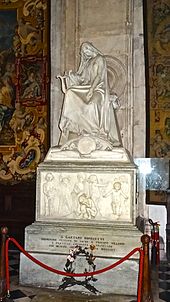
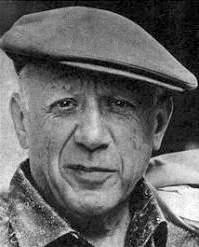 On this day in 1973, painter, draughtsman, and sculptor, Pablo Picasso died at his home in Mougins, France at the age of 91. Born on 25 October 1881 in the city of Málaga in the Andalusian region of Spain and baptized Pablo Diego José Francisco de Paula Juan Nepomuceno María de los Remedios Cipriano de la Santísima Trinidad Ruiz y Picasso. A prolific artist, he is perhaps best known as a pioneer, along with Georges Braque, of the avant-garde art movement Cubism which revolutionized European painting and sculpture. Among his most famous works are the proto-Cubist Les Demoiselles d’Avignon (1907)
On this day in 1973, painter, draughtsman, and sculptor, Pablo Picasso died at his home in Mougins, France at the age of 91. Born on 25 October 1881 in the city of Málaga in the Andalusian region of Spain and baptized Pablo Diego José Francisco de Paula Juan Nepomuceno María de los Remedios Cipriano de la Santísima Trinidad Ruiz y Picasso. A prolific artist, he is perhaps best known as a pioneer, along with Georges Braque, of the avant-garde art movement Cubism which revolutionized European painting and sculpture. Among his most famous works are the proto-Cubist Les Demoiselles d’Avignon (1907)
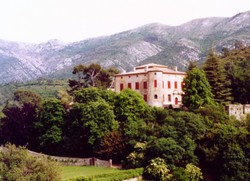 The Final Footprint – Picasso is interred at the Chateau of Vauvenargues near Aix-en-Provence, a property he had acquired in 1958 and occupied with Jacqueline. His grave is decorated with his own sculpture “Woman with the Vase” (1933), which was shown during the World exhibition of 1937 in Paris.
The Final Footprint – Picasso is interred at the Chateau of Vauvenargues near Aix-en-Provence, a property he had acquired in 1958 and occupied with Jacqueline. His grave is decorated with his own sculpture “Woman with the Vase” (1933), which was shown during the World exhibition of 1937 in Paris. On this day in 1990, national poster child for HIV/AIDS Ryan White died at Riley Hospital for Children in Indianapolis, at the age of 18. Born Ryan Wayne White on December 6, 1971 in Kokomo, Indiana. As a hemophiliac, he became infected with HIV from a contaminated factor VIII blood treatment and, when diagnosed in December 1984, was given six months to live. Doctors said he posed no risk to other students, as AIDS is not an airborne disease and spreads solely through body fluids, but AIDS was poorly understood by the general public at the time. When White tried to return to school, many parents and teachers in Howard County rallied against his attendance due to concerns of the disease spreading through bodily fluid transfer. A lengthy administrative appeal process ensued, and news of the conflict turned Ryan into a popular celebrity and advocate for AIDS research and public education. Surprising his doctors, Ryan White lived five years longer than predicted. He died one month before his high school graduation.
On this day in 1990, national poster child for HIV/AIDS Ryan White died at Riley Hospital for Children in Indianapolis, at the age of 18. Born Ryan Wayne White on December 6, 1971 in Kokomo, Indiana. As a hemophiliac, he became infected with HIV from a contaminated factor VIII blood treatment and, when diagnosed in December 1984, was given six months to live. Doctors said he posed no risk to other students, as AIDS is not an airborne disease and spreads solely through body fluids, but AIDS was poorly understood by the general public at the time. When White tried to return to school, many parents and teachers in Howard County rallied against his attendance due to concerns of the disease spreading through bodily fluid transfer. A lengthy administrative appeal process ensued, and news of the conflict turned Ryan into a popular celebrity and advocate for AIDS research and public education. Surprising his doctors, Ryan White lived five years longer than predicted. He died one month before his high school graduation. The Final Footprint
The Final Footprint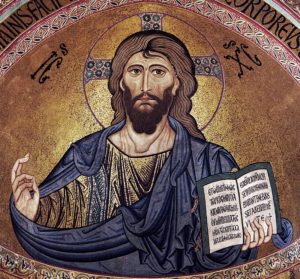
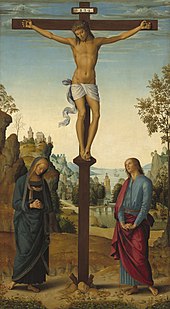

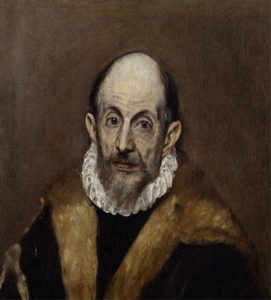
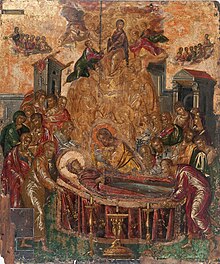







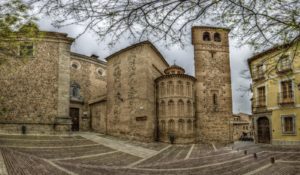
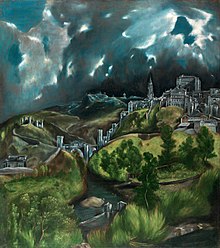
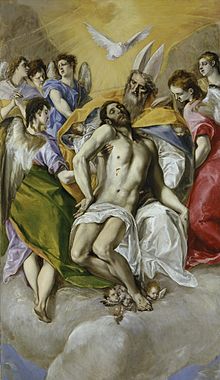



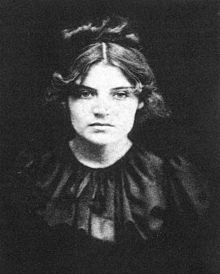 On this day in 1938, French painter and artists’ model, Suzanne Valadon died of a stroke at age 72 in Paris. Born Marie-Clémentine Valadon on 23 September 1865 at Bessines-sur-Gartempe, Haute-Vienne, France. In 1894, Valadon became the first woman painter admitted to the Société Nationale des Beaux-Arts. She was also the mother of painter Maurice Utrillo. The subjects of her drawings and paintings included mostly female nudes, female portraits, still lifes, and landscapes. She never attended the academy and was never confined within a tradition. Valadon debuted as a model in 1880 in Montmartre at age 15. She modeled for over 10 years for many different artists including the following: Pierre-Cécile Puvis de Chavannes, Théophile Steinlen, Pierre-Auguste Renoir, and Henri de Toulouse-Lautrec.
On this day in 1938, French painter and artists’ model, Suzanne Valadon died of a stroke at age 72 in Paris. Born Marie-Clémentine Valadon on 23 September 1865 at Bessines-sur-Gartempe, Haute-Vienne, France. In 1894, Valadon became the first woman painter admitted to the Société Nationale des Beaux-Arts. She was also the mother of painter Maurice Utrillo. The subjects of her drawings and paintings included mostly female nudes, female portraits, still lifes, and landscapes. She never attended the academy and was never confined within a tradition. Valadon debuted as a model in 1880 in Montmartre at age 15. She modeled for over 10 years for many different artists including the following: Pierre-Cécile Puvis de Chavannes, Théophile Steinlen, Pierre-Auguste Renoir, and Henri de Toulouse-Lautrec.
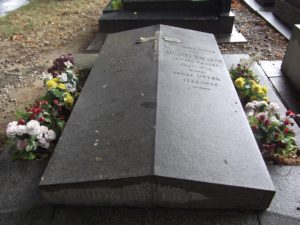
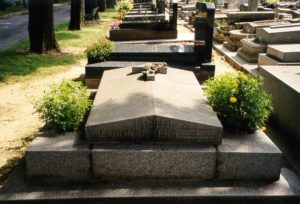
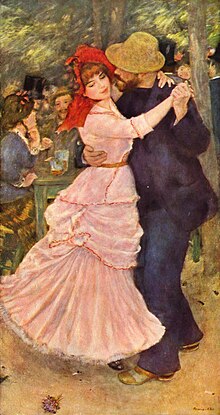
























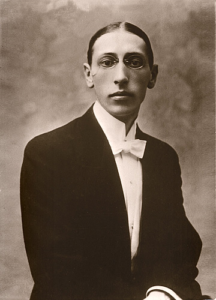

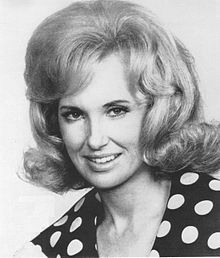
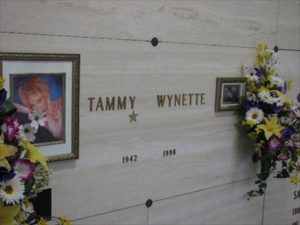
 On this day in 2014, United States Army veteran, actor, vaudevillian, comedian, producer and radio personality Mickey Rooney died in Los Angeles at the age of 93. Born Joseph Yule Jr. on September 23, 1920 in Brooklyn. In a career spanning nine decades and continuing until shortly before his death, he appeared in more than 300 films and was one of the last surviving stars of the silent film era.
On this day in 2014, United States Army veteran, actor, vaudevillian, comedian, producer and radio personality Mickey Rooney died in Los Angeles at the age of 93. Born Joseph Yule Jr. on September 23, 1920 in Brooklyn. In a career spanning nine decades and continuing until shortly before his death, he appeared in more than 300 films and was one of the last surviving stars of the silent film era.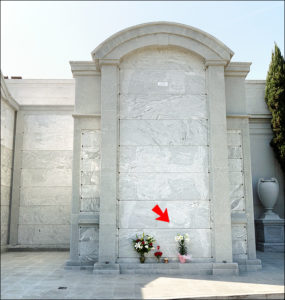
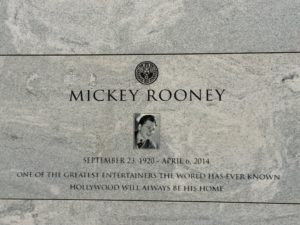
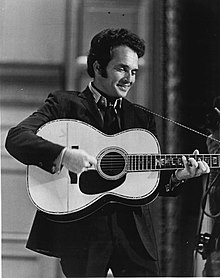
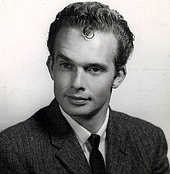
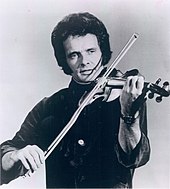
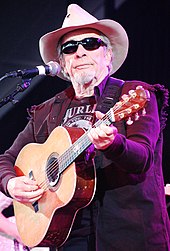




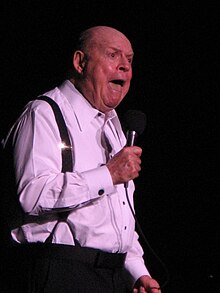

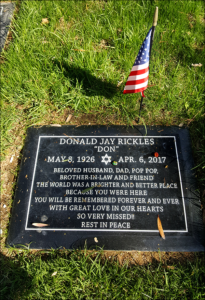
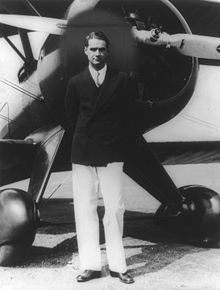
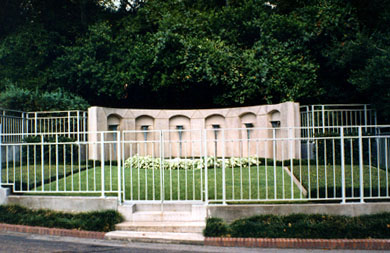



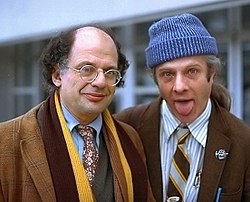


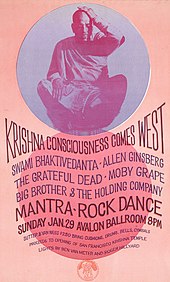
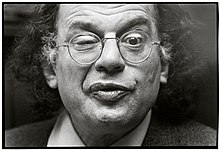

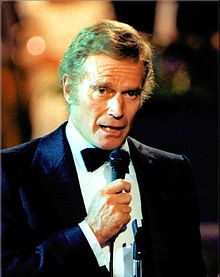











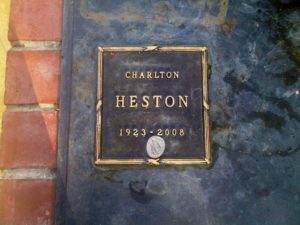
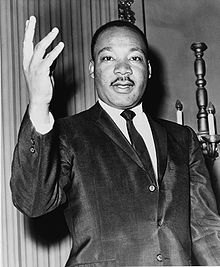
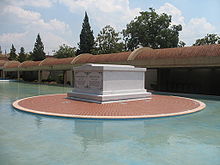 The Final Footprint – King is entombed at the Martin Luther King, Jr. National Historic Site in Atlanta. His crypt has the inscription; “Free at last, Free at last, Thank God Almighty I’m Free at last.” Coretta was entombed next to him upon her death in 2006. Her crypt has the inscription; “And now abide Faith, Hope, Love, These Three; but the greatest of these is Love.” 1 Cor. 13:13. Martin Luther King, Jr. Day was established as a U.S. federal holiday in 1
The Final Footprint – King is entombed at the Martin Luther King, Jr. National Historic Site in Atlanta. His crypt has the inscription; “Free at last, Free at last, Thank God Almighty I’m Free at last.” Coretta was entombed next to him upon her death in 2006. Her crypt has the inscription; “And now abide Faith, Hope, Love, These Three; but the greatest of these is Love.” 1 Cor. 13:13. Martin Luther King, Jr. Day was established as a U.S. federal holiday in 1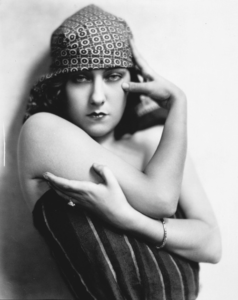


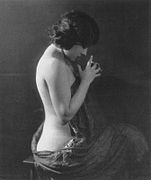




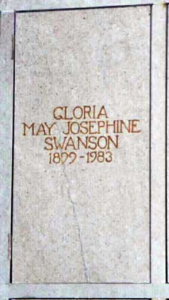
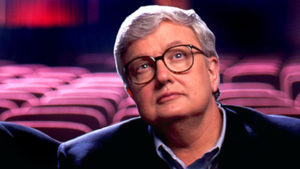 And on this day in 2013, film critic, historian, journalist, screenwriter, and author Roger Ebert died from cancer in Chicago at the age of 70. Born Roger Joseph Ebert on June 18, 1942 in Urbana, Illinois. He was a film critic for the Chicago Sun-Times from 1967 until his death in 2013. In 1975, Ebert became the first film critic to win the Pulitzer Prize for Criticism.
And on this day in 2013, film critic, historian, journalist, screenwriter, and author Roger Ebert died from cancer in Chicago at the age of 70. Born Roger Joseph Ebert on June 18, 1942 in Urbana, Illinois. He was a film critic for the Chicago Sun-Times from 1967 until his death in 2013. In 1975, Ebert became the first film critic to win the Pulitzer Prize for Criticism.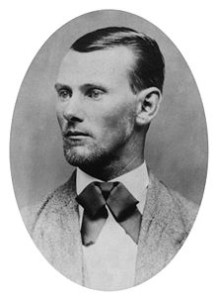
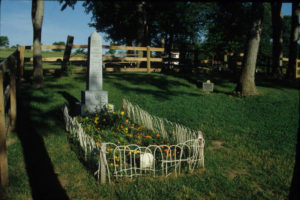
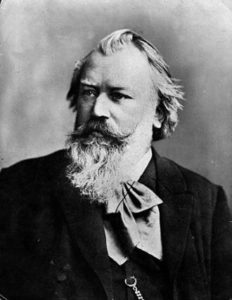
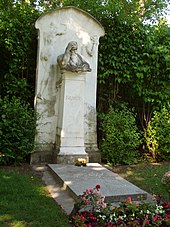
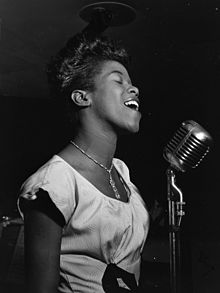
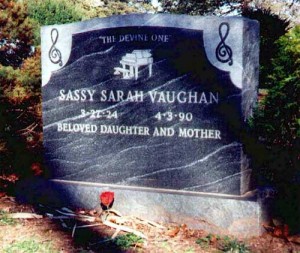 The Final Footprint – Vaughan’s funeral was held at the new location of Mount Zion Baptist Church, 208 Broadway in Newark, New Jersey, with the same congregation she grew up in. Following the ceremony, a horse-drawn carriage transported her body to its final resting place in Glendale Cemetery, Bloomfield in New Jersey. Her grave is marked by an individual upright marker with the inscription “THE DIVINE ONE” and the term of endearment “BELOVED DAUGHTER AND MOTHER.”
The Final Footprint – Vaughan’s funeral was held at the new location of Mount Zion Baptist Church, 208 Broadway in Newark, New Jersey, with the same congregation she grew up in. Following the ceremony, a horse-drawn carriage transported her body to its final resting place in Glendale Cemetery, Bloomfield in New Jersey. Her grave is marked by an individual upright marker with the inscription “THE DIVINE ONE” and the term of endearment “BELOVED DAUGHTER AND MOTHER.”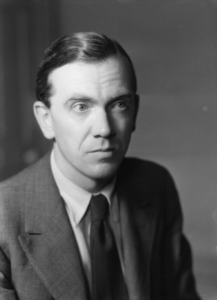
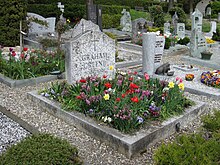
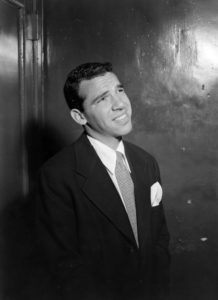
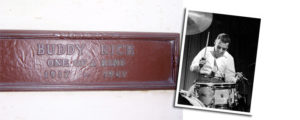
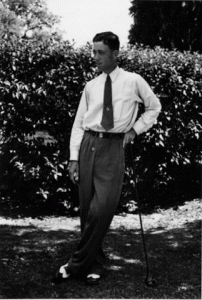

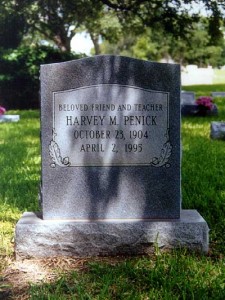
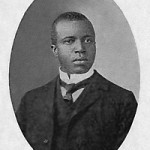
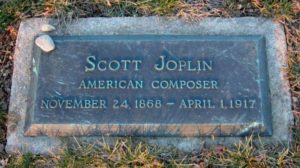


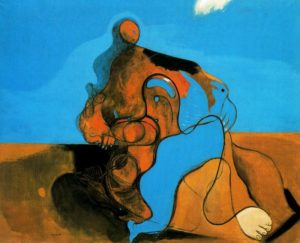 In 1927 Ernst married Marie-Berthe Aurenche, and it is thought his relationship with her may have inspired the erotic subject matter of The Kiss and other works of that year. Ernst appeared in the 1930 film L’Âge d’Or, directed by self-identifying Surrealist Luis Buñuel. In 1938, the American heiress and artistic patron Peggy Guggenheim acquired a number of Ernst’s works, which she displayed in her new gallery in London. Ernst and Guggenheim later were married (1942–1946).
In 1927 Ernst married Marie-Berthe Aurenche, and it is thought his relationship with her may have inspired the erotic subject matter of The Kiss and other works of that year. Ernst appeared in the 1930 film L’Âge d’Or, directed by self-identifying Surrealist Luis Buñuel. In 1938, the American heiress and artistic patron Peggy Guggenheim acquired a number of Ernst’s works, which she displayed in her new gallery in London. Ernst and Guggenheim later were married (1942–1946).
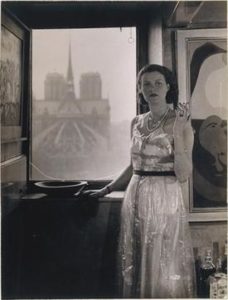
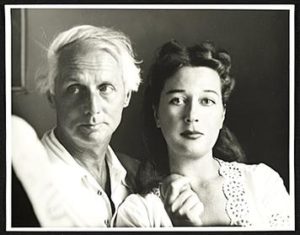
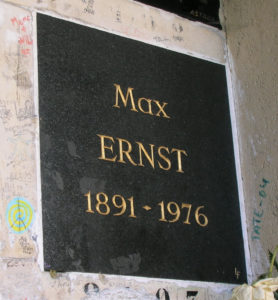 The Final Footprint
The Final Footprint 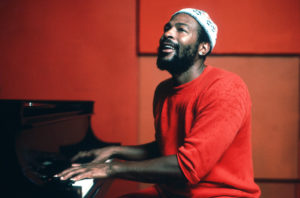 On this day in 1984, singer-songwriter and musician, The Prince of Motown, The Prince of Soul, Grammy winner, Marvin Gaye was shot and killed by his father during an argument at his parent’s home in Los Angeles the day before his 45th birthday. Born Marvin Pentz Gaye, Jr. on 2 April 1939 at Freedman’s Hospital in Washington, D.C. One of the giants of music. Where does one start a list of favorite Gaye songs; “Can I get a Witness”, “What’s Going On”, “Let’s Get it On”, “Sexual Healing”, to name just a few. Gaye was married twice; Anna Gordy, Berry Gordy’s sister (1964-1977) and Janis Hunter (1977-1981 divorce).
On this day in 1984, singer-songwriter and musician, The Prince of Motown, The Prince of Soul, Grammy winner, Marvin Gaye was shot and killed by his father during an argument at his parent’s home in Los Angeles the day before his 45th birthday. Born Marvin Pentz Gaye, Jr. on 2 April 1939 at Freedman’s Hospital in Washington, D.C. One of the giants of music. Where does one start a list of favorite Gaye songs; “Can I get a Witness”, “What’s Going On”, “Let’s Get it On”, “Sexual Healing”, to name just a few. Gaye was married twice; Anna Gordy, Berry Gordy’s sister (1964-1977) and Janis Hunter (1977-1981 divorce).